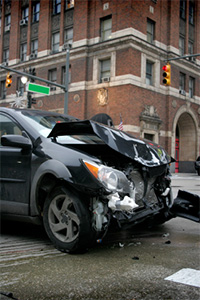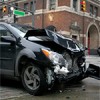 So, you’ve been in a car accident. You’re suffering with neck pain – “Whiplash”, back pain, arm or leg pain. Maybe even jaw (TMJ) pain and headache, rib pain, feet, knees, shoulders or hand pain. You name it, and it can be hurt and hurting. Where injuries happen, and often as a result…pain, to people who’ve been in a car accident has a lot to do with a combination of things, like external “mechanics”, the body’s position on impact, protective devices, and the person’s own health. These hurt areas will have specific parts involved; the joints, discs, ligaments, muscles, and tendons, to name a few. Along with the more obvious injuries, like broken bones, hurt internal organs, or cuts and bruises, the nerves and the spinal cord itself can be involved. The brain can be injured even without a blow to the head. Tears, overstretched tissue and compression forces beyond what the body part can hold up to are the culprits. Human bodies are just no match for the forces that come through them when one vehicle hits another, even at low speeds and without much vehicle damage. And unfortunately for so many, injuries with long lasting and devastating effects can also result, but with no immediate or obvious pain; even for years.
So, you’ve been in a car accident. You’re suffering with neck pain – “Whiplash”, back pain, arm or leg pain. Maybe even jaw (TMJ) pain and headache, rib pain, feet, knees, shoulders or hand pain. You name it, and it can be hurt and hurting. Where injuries happen, and often as a result…pain, to people who’ve been in a car accident has a lot to do with a combination of things, like external “mechanics”, the body’s position on impact, protective devices, and the person’s own health. These hurt areas will have specific parts involved; the joints, discs, ligaments, muscles, and tendons, to name a few. Along with the more obvious injuries, like broken bones, hurt internal organs, or cuts and bruises, the nerves and the spinal cord itself can be involved. The brain can be injured even without a blow to the head. Tears, overstretched tissue and compression forces beyond what the body part can hold up to are the culprits. Human bodies are just no match for the forces that come through them when one vehicle hits another, even at low speeds and without much vehicle damage. And unfortunately for so many, injuries with long lasting and devastating effects can also result, but with no immediate or obvious pain; even for years.
- External “mechanics” includes which part of the vehicle is struck
- Body position includes which seat is being occupied, and if the person is turned, bent or facing straight ahead
- Common protective devices include seatbelts, headrests and airbags
- General levels of health and conditioning translates into what gets hurt, how badly and how fast or well recovery takes place
Front-end, rear-end, broadside, and angled impacts all have specific forceful results on the body, meaning a person was thrown or jostled forwards, backwards, or side to side. A flip-over or roll-over accident also has specific results, with more chance for head injury. One or more motions can happen with each direction of impact, further complicating the picture. All this played off against whether a person was 1) facing straight ahead, 2) had their head or body turned, 3) had their arms or legs in various positions, 4) had their trunk twisted, or 5) was bending over or sitting straight up.
The driver’s body position allows bracing on the steering wheel for protection, but also can allow for striking it with the chest or hanging on so tight that injuries occur up through the hands and arms. Passengers don’t have the steering wheel to hang onto so are more prone to strike dashboards, windows and the seats in front of them. Anyone in any position can brace hard with legs in a protective reaction. Unfortunately, the legs, feet, ankles and hips are then prone to injure.
Generally, seatbelts, airbags and headrests save lives, but also produce their own set of injury effects. Bodies suddenly jerked against the belt end up with shoulder and rib injuries. Airbags can produce chest and head and arm injuries. Headrests, if properly positioned high enough can minimize neck injuries, but also create another set of forces that produce head and neck injury from the “blow” to the back of the head.
Bodies in good health and reasonably well conditioned can hold up better to stresses of all kinds, including back and neck, etc. injuries from car accidents. But if a person has arthritis affecting the joints, those joints are in a “weakened” condition already, not working well, and can’t take the trauma as well. They get hurt worse, and have a harder time recovering. Diabetes and other systemic diseases make it difficult for a body to heal properly and quicker than if those problems were not present. Again, the body was already in “trouble”, so these newly added injuries pile on top of the other problems and produce more effects. If a problem was already present, like a herniated disc, plantar fasciitis, shoulder tendonitis, carpal tunnel, etc., once again one problem is added onto another.
The dynamics of where people get hurt from the impact of a car accident are vast – and complicated. One thing is for sure though. Forces are transmitted through the body so fast that we can’t protect against them, and even if we could, holding on or bracing can and does produce even more injury problems. Seek out a doctor well trained in the complicated dynamics and injury effects of auto injuries. This can make a huge difference in how well and how thoroughly those injuries are discovered, addressed and cared for.
By Dr. William T. Norlin Chiropractor in Minneapolis/St Paul, Minnesota











